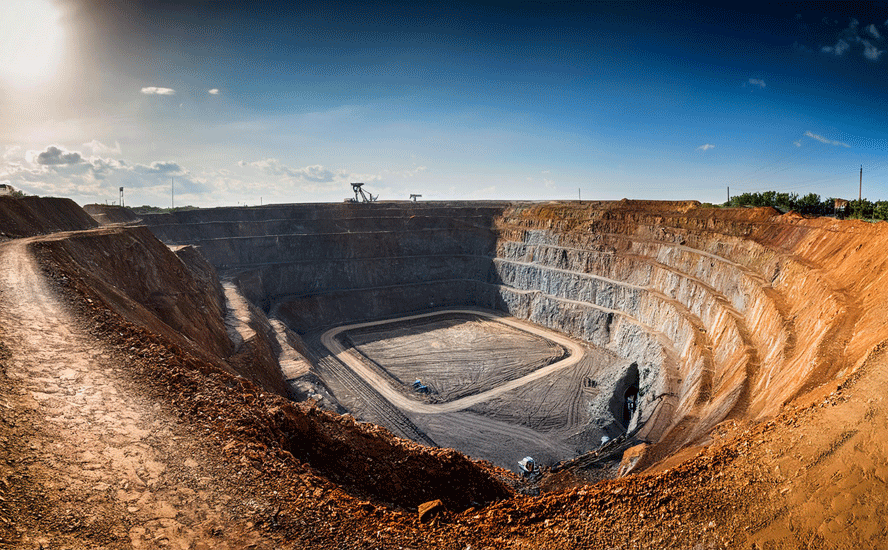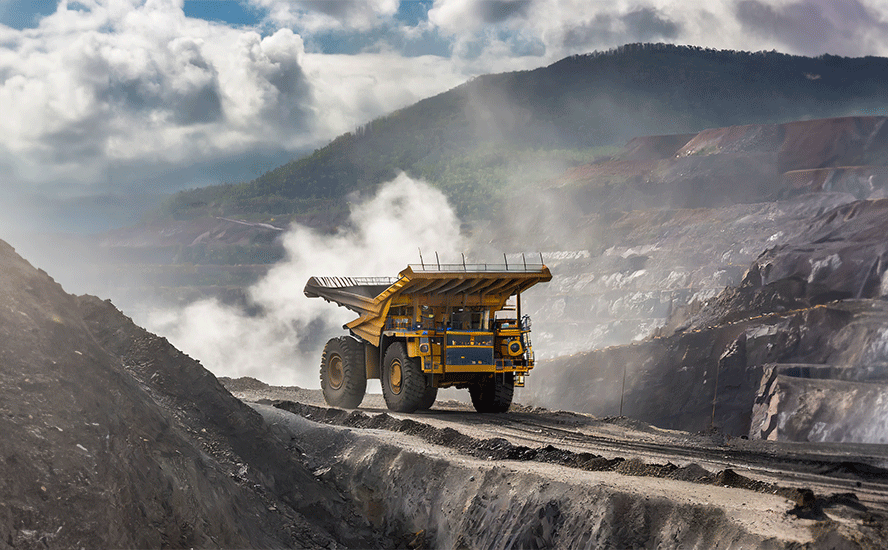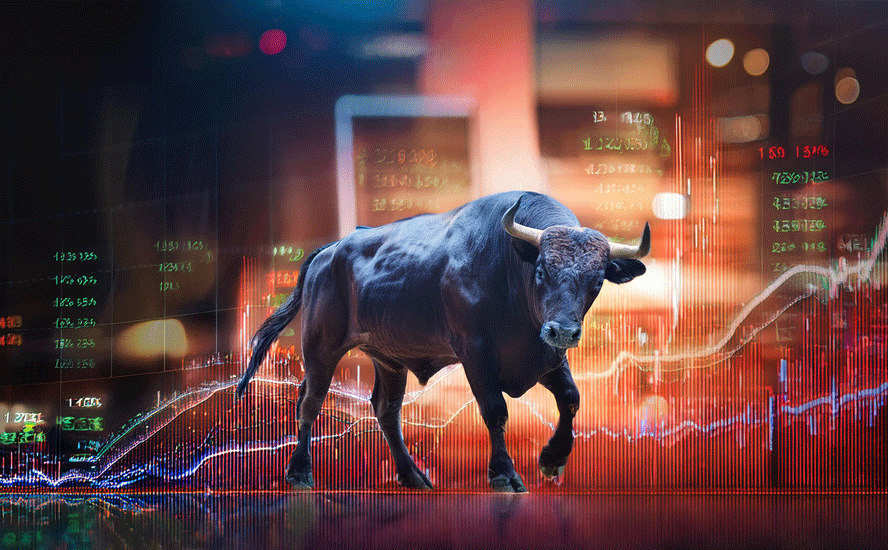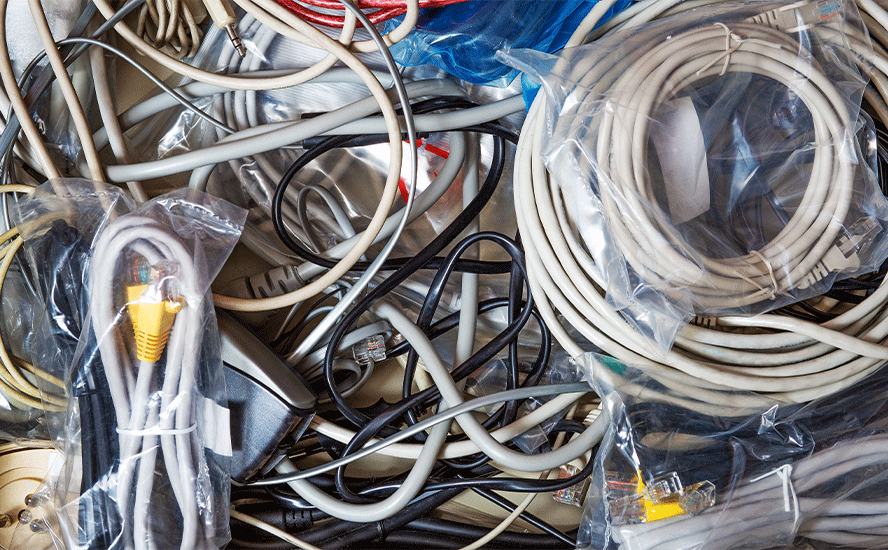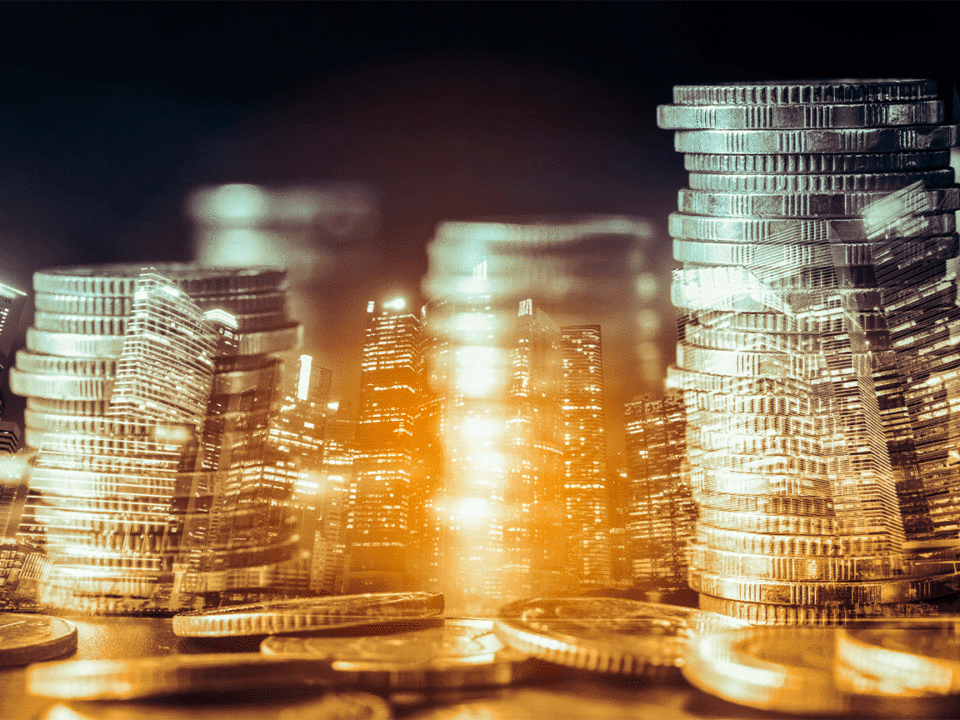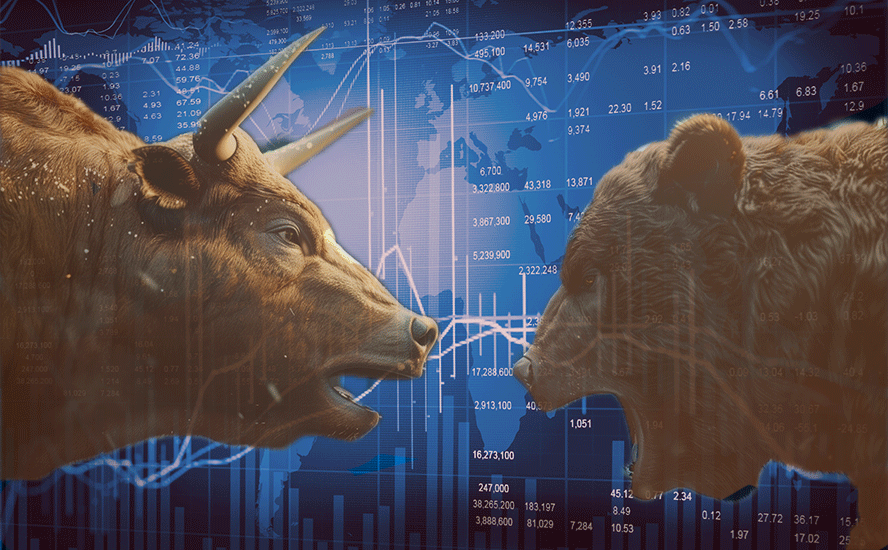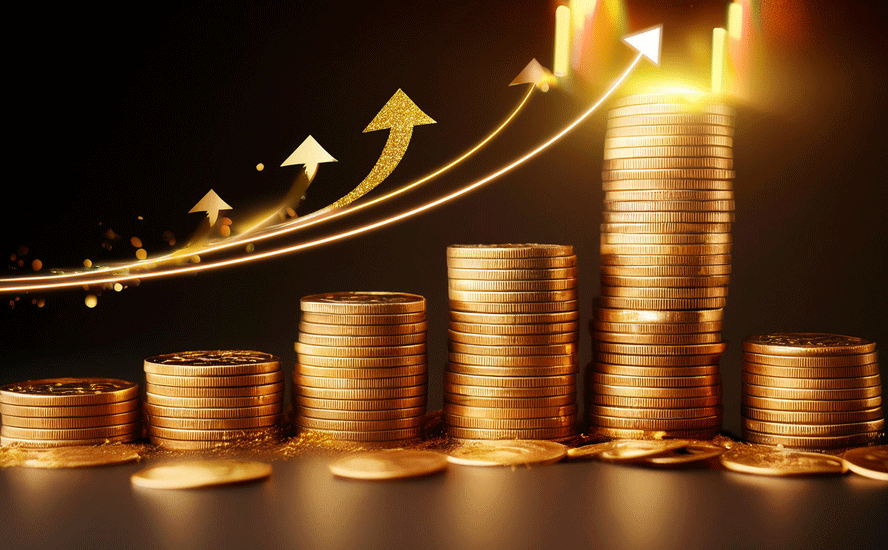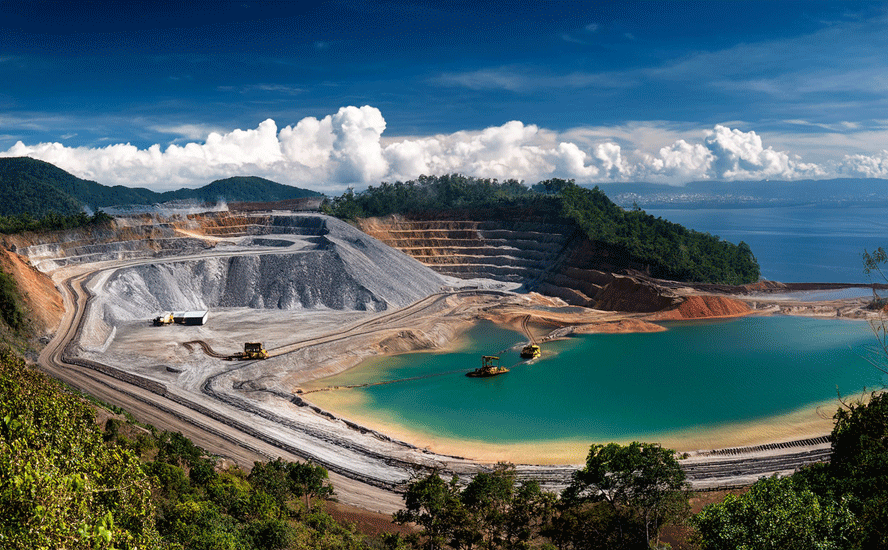Manufacturing’s thirst for metals boosts copper, iron ore
2020.10.03
Global equities churned on Friday after the stunning revelation that US President Donald Trump and First Lady Melania have contracted the coronavirus. The S&P 500 fell 1% and the Dow finished the day down 0.5%, as investors wondered what Trump’s diagnosis could mean for the Nov. 3 presidential election and the possibility of more stimulus from Washington.
Tech stocks were hit especially hard, with the Nasdaq down 2.2%.
The Trump’s covid-19 bombshell shoved aside what was expected to be the market-mover on Friday, the latest US jobs report. The Labor Department reported on Friday morning that 661,000 jobs were added in September, a positive sign that the economy is recovering from covid-related lockdowns in the spring.
On the one hand the news was good – the unemployment rate fell to 7.9% in September, down from 8.4% in August, and lower than Wall Street’s forecast of 8.2%. However, economists were expecting an increase in non-farm payrolls of 859,000, in line with the +1.489 million jobs created in August.
Yahoo Finance summarized the mixed-bag report:
The addition in non-farm payrolls marked the fifth straight month of net job gains. Still, the economy remains far from recuperating the jobs lost during the nadir of the pandemic period in March and April. Between those two months, employment fell by more than 22 million. Through September, just 11.4 million jobs were brought back.
Last week there were “only” 837,000 US jobless claims, a new pandemic low, but that is still a huge number compared to the pre-pandemic normal.
Factories fired up
Of course, the United States is the country worst-hit by the pandemic. Its trading partners and competitors have posted fewer infections and deaths, and many are therefore further ahead in their journey of economic recovery.
Six months into covid-19, global manufacturing posted its strongest growth in over two years, with factory bosses around the world reporting that new orders and output grew in September.
This resulted in JP Morgan’s Global Manufacturing Purchasers Managers Index (PMI) increasing from 51.7 in August, to 52.3 in September. Figures above 50 indicate growth, those under 50 a contraction. It should however be noted, that despite factory growth, some companies are still cutting staff. Manufacturing employment in September fell for the 10th month straight; although the US and China are hiring, the eurozone and Japan are reducing payrolls.
Summarizing the report, Olya Borichevska, Global Economist at JP Morgan stated,
“The global industrial sector continued its recovery in September. While overall the September manufacturing PMIs disappointed, there were a number of positive aspects in the report.
Against a decline in the output index, the new orders PMI and its ratio to finished goods inventory both increased suggesting a near term gain in the output index. Over-all we think the recovery should be sustained as the re-opening of economies continues.
The labour market remains subdued, with the level in the employment PMI depressed. That said, pockets of jobs growth raise the possibility that the retrenchment on this front is softening.”
Brazil’s factories grew the fastest last month, followed by India’s, while Myanmar and Mexico suffered the worst contractions, by Manufacturing PMI.
Despite a number of European countries showing green, in the chart above, economic growth in the eurozone appears to have stagnated following a relatively strong burst in July, when many countries phased out virus-related restrictions on people’s movements.
In August IHS Market’s PMI fell back to a level suggesting the eurozone economy was barely growing. The purchasing managers index based on 5,000 companies across the 19-country European Union, dropped to 51.6 in August compared to 54.9 in July. The survey also found companies were cutting jobs for a sixth consecutive month.
Advisor’s Edge explained that coronavirus contagions are rising rapidly in many European countries, and even though deaths remain fairly low, consumers are cautious.
“The path taken will likely depend in large part on how successfully Covid-19 can be suppressed and whether companies and their customers alike can gain the confidence necessary to support growth,” said Andrew Harker, economics director at IHS Markit.
The eurozone economy shrank by a sizeable 12.1% in the second quarter.
We get a better understanding of the state of the global economy by taking a closer look at the two largest economies, China and the United States.
US jobless recovery
The US housing market is booming, and factories are humming, yet not a lot of people are being hired back. That pretty much sums up the situation the US faces at it gears up for the final stretch of an election cycle like no other – considering the effects of the coronavirus on the economy and the unprecedented polarization of American politics we saw starkly revealed in the shockingly chaotic first presidential debate.
According to IHS Marit’s PMI survey, the September PMI showed 53.1, a slight increase from August, while the Institute for Supply Management’s (ISM) monthly PMI was 55.4, a decrease from August’s 56.0.
While down from August, 55.4 indicates expansion in the overall economy for the fifth month in a row after a contraction in April, which ended a period of 131 consecutive months of growth.
Of the 18 manufacturing industries in the ISM survey, 14 reported growth in September. Among the six biggest industries, Food, Beverage & Tobacco Products was the best-performing sector, followed by Fabricated Metal Products and Chemical Products. Aluminum, copper, freight, High-Density Polyethylene (HDPE) used in water piping, lumber, precious metals and steel, were among the commodities that rose in price in September.
“Manufacturing performed well in the month with demand, consumption and inputs registering growth indicative of a normal expansion cycle. While certain industry sectors are experiencing difficulties that will continue in the near term, the manufacturing community as a whole has learned to conduct business effectively and deal with the variables imposed by the COVID-19 pandemic,” says Timothy Fiore of ISM.
According to The Guardian, the other survey, IHS Markit’s PMI, showed the best improvement in operating conditions across US manufacturing since early 2019.
US factories reported higher demand for plant and machinery, as customers increased their investment spending. With order books busier, firms took on more staff too (unlike in Britain, where they are still cutting employee numbers).
As mentioned, US unemployment remains worryingly high, despite the drop to 837,000 last week. Indeed, the number of Americans on jobless benefits is about three times higher than in March, showing a stagnating labor market, and trouble ahead, as far as recovery. The Guardian quotes Glassdoor senior economist Daniel Zhao,
“The latest UI claims report shows UI claims made almost no progress so far in September, unchanged from the end of August. Claims remain stagnant at high levels, which is a difficult reality for millions of workers six months into the pandemic.
Economic recovery propelled by sheer momentum can only go so far amid a pandemic. This stagnation signals enormous ongoing churn underneath the labor market as layoffs continue.”
Yet despite stubbornly high unemployment, Americans continue to buy real estate. Those with the means are no doubt incentivized by low interest rates.
According to the latest S&P CoreLogic Case-Shiller index, house prices at the 20 largest US cities jumped by 3.9% per year in July, up from 3.5% in June. Prices rose fastest in Phoenix (+9.2%), Seattle (+7%) and Charlotte (+6%).
China stockpiling
China is the world’s biggest commodities consumer so the health of its economy is watched closely to see whether there is demand and in which sectors. China’s official PMI in September stood at 51.5, half a percentage point higher than August, while the Caixin/Markit manufacturing PMI, which better represents small, private firms, fell slightly to 53.0. Despite both surveys showing economic expansion, Chinese officials say China’s industrial recovery is not enough.
“Although the overall manufacturing demand has improved, the industry’s recovery is still uneven. The survey results show that over 50 per cent of companies in the textile, clothing and apparel, wood processing and other manufacturing sectors reported insufficient market demand, which was higher than the overall level of the manufacturing industry, and the recovery momentum was still insufficient,” the South China Morning Post quoted Zhao Qinghe, a senior statistician at the National Bureau of Statistics (NBS).
“In addition, the global pandemic has not yet been fully and effectively controlled, and there are still uncertain factors in China’s imports and exports.”
“The recovery of the service sector has accelerated. The policies of boosting consumer spending in various regions have shown results, residents‘ willingness to consume has been increasing and market demand has been effectively released.”
According to the World Bank and the OECD, the Chinese economy in 2020 will grow 2% – the only G20 country to show positive economic output this year.
At AOTH we want to know what’s coming for the world economy, and just as importantly, what’s in store for the metals we are invested in. Fortunately, there is good news on the horizon, and unsurprisingly, it comes from China.
Recent media reports indicate that China’s next five-year plan, beginning in 2021, calls for huge increases in state reserves of crude, strategic metals and farm goods. For example last month, Bloomberg reported China had drawn up plans to buy 2,000 tons of cobalt, used in EV batteries. NDRC, the agency that oversees the reserves administration bought cheap oil after crude prices crashed, and in early September, London Metal Exchange (LME) warehouses reported their lowest copper stock levels since 2005, as Chinese buyers scrambled to purchase material. The result was the copper price riding to a two-year high of US$3.09 per tonne.
In June, the country’s imports of unwrought copper increased 50% from May’s level.
China’s opaque media and economic statistics make any definitive answers as to why the country is stockpiling difficult, but among the most likely explanations is the fact that China wants to ensure that its secretive stockpiles are large enough to withstand disruptions to global trade, like we have witnessed with covid-19. As Bloomberg put it,
China’s top leadership will next month lay out its strategy for 2021-2025 that will include ramping up domestic consumption and making more critical technology at home, in a bid to insulate the world’s second-biggest economy from worsening geopolitical tensions and fraying supply chains. Securing food supplies, fuel and materials is a precondition of greater self-reliance for the world’s biggest importer of commodities.
In a previous article we pointed out there are more nefarious explanations, other than just being prepared, that could be driving China to have large enough buffers for its inputs, that it needs to use up its +$3.3 trillion in US dollar reserves in a massive raw materials splurge. China, we argued, is preparing for war.
In an op-ed for smallcaps.com, Robin Bromby, previously a reporter for The Australian, reminds us that in the months before the 1941 attack on Pearl Harbor, Japan placed order for about half of Peru’s cotton crop, as well as molybdenum, antimony, tungsten and vanadium.
Copper
Even the suggestion that a powerful agency like China’s NDRC might be buying a specific commodity, can send the price of said commodity soaring. This is especially the case for copper, which consumes about half of the world’s red metal.
Earlier this week, December Comex copper futures leapt to $3.04 per pound, after Beijing’s official manufacturing PMI rose to a more than two-year high of 51.5. Moreover, Caixin’s new order subindex hit a 9-year high, and new export businesses expanded at the fastest rate since August 2017, which according to Capital Economics, “bodes well for a recovery in manufacturing for the rest of the world.”
Although the copper rally came to an abrupt halt on Thursday, attributed to a sudden build-up of copper warehouse inventories, by Friday prices were trending back up, to $2.94/lb, as of this writing.
On the supply side, the market for copper is quite bullish. Chilean state-owned Codelco, the largest copper miner in the world, lost 4.4% of its production in July, as the coronavirus forced the company to scale back staffing, slow projects and turn off a smelter.
As we have reported, without new capital investments, Commodities Research Unit (CRU) predicts mine production will drop from the current 20 million tonnes to below 12Mt by 2034, leading to a supply shortfall of more than 15Mt. Over 200 copper mines are expected to run out of ore before 2035, with not enough new mines in the pipeline to take their place.
Covid-related mine closures, albeit temporary, are ringing alarm bells throughout the copper market and bidding up prices, as investors fret over whether the industry can meet demand, especially now that China appears to be back on its feet.
Last month Bloomberg wrote that The global copper market could be on the cusp of a historic supply squeeze as Chinese demand runs red hot and exchange inventories plunge to their lowest levels in more than a decade.
And this just in:
Copper output from the world’s top 10 producers declined 3.7% during the second quarter, due to virus-related lockdowns in Chile, Peru and Mexico.
According to GlobalData, total output during the three-month period decreased from 2.7 million tonnes to 2.6Mt. Total annual mined copper production is around 20 million tonnes.
Another supply squeeze is likely in Zambia, where copper mines have halted $2 billion worth of planned expansions, due to a dispute over a royalty tax introduced last year. Among the companies refusing to cow to the government’s policy of “double taxation” (not allowing mining companies to deduct the royalty from other corporate taxes) are Canada’s First Quantum Minerals (Kansanshi mine), EMR Capital and its Lubambe copper operation, and Glencore’s Mopani Copper Mines. As Africa’s number 2 copper miner, any supply reductions from Zambia’s mines will likely be reflected in increased copper prices.
Iron ore
Iron ore is another metal highly influenced by Chinese demand for the steelmaking ingredient. The country accounts for some 70% of the world’s seaborne iron ore trade. On Sept. 3, iron ore prices climbed to a six and a half-year high – due to levels of activity in Chinese construction and manufacturing not seen for close to a decade. According to Fastmarkets MB, the $129.92 per tonne for 62% Fe fines imported into northern China, was the highest since 2014 and brought the commodity’s 2020 gains to over 40%.
Prices have since slipped a few dollars, but on Sept. 30 they surged again, to $123.47 a tonne, due to continued economic growth in China and a temporary output halt at Vale’s Viga concentration plant. Year to date iron ore prices as of Wednesday were up 34%.
In September Brazilian iron ore exports increased 18.5%, year on year, to 37.86 million tonnes, after Vale, one of the world’s largest producers, resumed operations at Viga. The country represented 21.3% of China’s iron ore imports in 2019. Nearly two-thirds came from Australia.
Conclusion
As smart investors, always keeping an eye on the horizon, we want to know what lies ahead, especially as it relates to metals demand. What we find is a surprising amount of good news, hidden behind the sensational headlines that like to mark the extremes of commodity price movements.
First of all, the slow pace of growth, despite China’s success in pushing its economy ahead an expected +2% – the only G20 country this year likely to grow – bodes well for precious metals.
Interest rates are likely to stay low for at least the next couple of years. Indeed, with a US debt to GDP ratio over 100%, the government cannot afford to let interest rates rise too high – the interest payable on the debt would quickly become unmanageable. Low interest rates and rising inflation results in negative real rates – a sure-fire catalyst for gold (and silver).
Meanwhile, silver and copper are on an upward trajectory and will continue to do well under a Biden or Trump infrastructure push. Clearly, copper with all its green energy applications will be more in demand under Biden’s plan. Same with silver due to its application in solar panels (millions of them under Biden).
Copper too will be in heavy demand from Chinese stockpiling. At the end of August prices hit a 26-month high due to the strong Chinese rebound, and we have seen the effects of Chinese panic buying. Remember in early September, LME warehouses reported their lowest copper stock levels since 2005, as Chinese buyers scrambled to purchase material. The result was the copper price pushing to a two-year high of $3.09/lb.
And while stockpiles increased recently, they are still way off historical levels, as the chart below shows.
Finally, iron ore prices will continue to get a boost from China, as steel smelters ramp up to meet demand from the country’s huge construction and manufacturing sectors.
Another key industrial metal, zinc, has benefited from strong Chinese metals demand. While prices fell 17.3% during the first quarter owing to pandemic-related uncertainty, they have since recovered, with three-month zinc averaging $2,121 per tonne over the first eight months of the year.
The coronavirus has been devastating for many aspects of the global economy but for some of the most important mined commodities, it’s business as usual.
Owning gold, silver, zinc and copper, or better yet, the companies that are exploring for them and offer the best leverage against rising prices, continued to be my investing strategy going forward.
Richard (Rick) Mills
aheadoftheherd.com
subscribe to my free newsletter
Ahead of the Herd Facebook
Legal Notice / Disclaimer
Ahead of the Herd newsletter, aheadoftheherd.com, hereafter known as AOTH.
Please read the entire Disclaimer carefully before you use this website or read the newsletter. If you do not agree to all the AOTH/Richard Mills Disclaimer, do not access/read this website/newsletter/article, or any of its pages. By reading/using this AOTH/Richard Mills website/newsletter/article, and whether or not you actually read this Disclaimer, you are deemed to have accepted it.
Any AOTH/Richard Mills document is not, and should not be, construed as an offer to sell or the solicitation of an offer to purchase or subscribe for any investment.
AOTH/Richard Mills has based this document on information obtained from sources he believes to be reliable but which has not been independently verified. AOTH/Richard Mills makes no guarantee, representation or warranty and accepts no responsibility or liability as to its accuracy or completeness. Expressions of opinion are those of AOTH/Richard Mills only and are subject to change without notice. AOTH/Richard Mills assumes no warranty, liability or guarantee for the current relevance, correctness or completeness of any information provided within this Report and will not be held liable for the consequence of reliance upon any opinion or statement contained herein or any omission. Furthermore, AOTH/Richard Mills assumes no liability for any direct or indirect loss or damage or, in particular, for lost profit, which you may incur as a result of the use and existence of the information provided within this AOTH/Richard Mills Report.
AOTH/Richard Mills is not a registered broker/financial advisor and does not hold any licenses. These are solely personal thoughts and opinions about finance and/or investments – no information posted on this site is to be considered investment advice or a recommendation to do anything involving finance or money aside from performing your own due diligence and consulting with your personal registered broker/financial advisor. You agree that by reading AOTH/Richard Mills articles, you are acting at your OWN RISK. In no event should AOTH/Richard Mills liable for any direct or indirect trading losses caused by any information contained in AOTH/Richard Mills articles. Information in AOTH/Richard Mills articles is not an offer to sell or a solicitation of an offer to buy any security. AOTH/Richard Mills is not suggesting the transacting of any financial instruments but does suggest consulting your own registered broker/financial advisor with regards to any such transactions
Legal Notice / Disclaimer
Ahead of the Herd newsletter, aheadoftheherd.com, hereafter known as AOTH.Please read the entire Disclaimer carefully before you use this website or read the newsletter. If you do not agree to all the AOTH/Richard Mills Disclaimer, do not access/read this website/newsletter/article, or any of its pages. By reading/using this AOTH/Richard Mills website/newsletter/article, and whether you actually read this Disclaimer, you are deemed to have accepted it.



